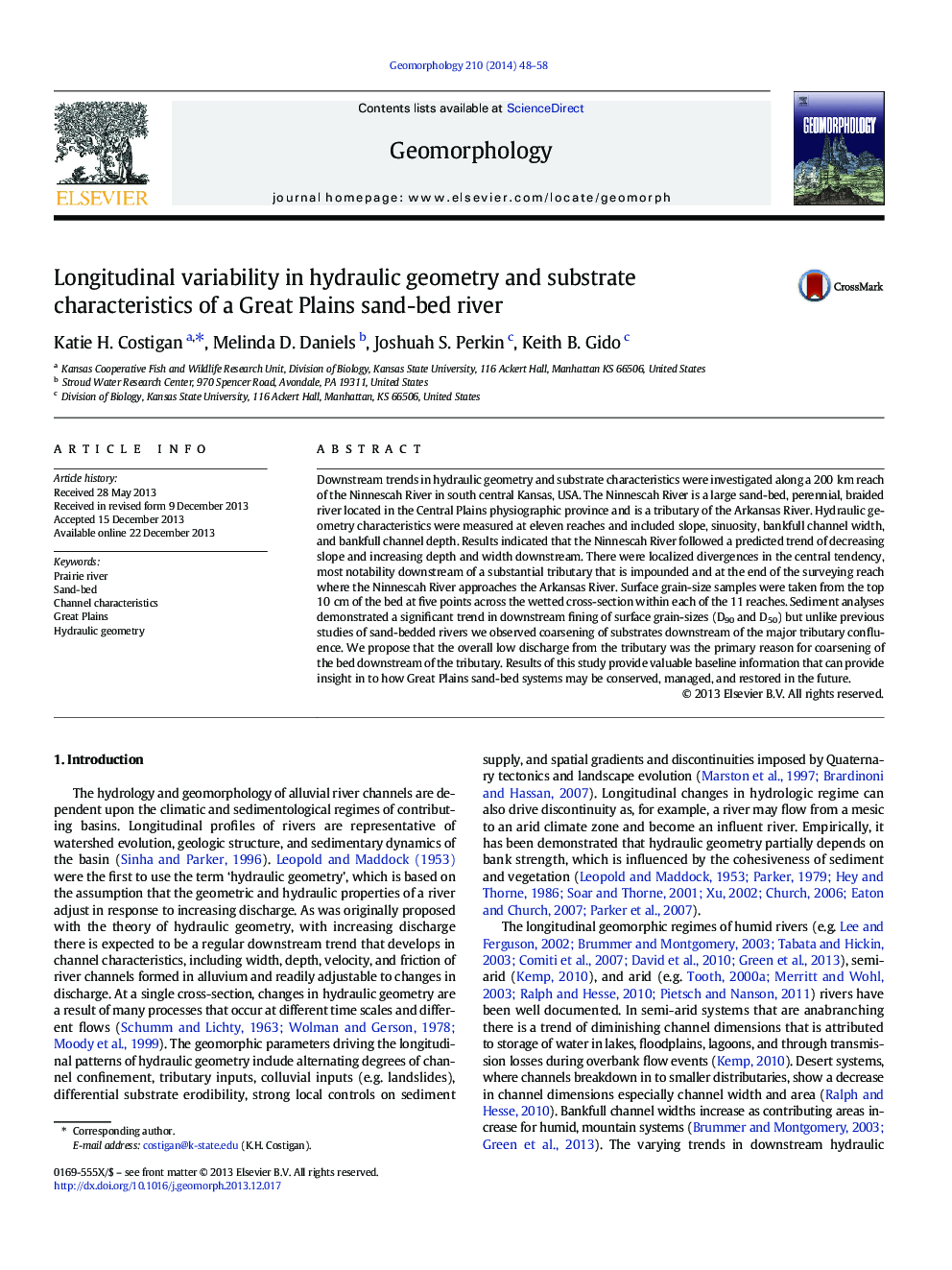| Article ID | Journal | Published Year | Pages | File Type |
|---|---|---|---|---|
| 4684592 | Geomorphology | 2014 | 11 Pages |
•Ninnescah River follows expected hydraulic geometry and sediment dynamics.•Deviations are downstream of a large tributary and control of a larger river.•Baseline data for the geomorphic and sedimentary patterns of large, sand-bed rivers.
Downstream trends in hydraulic geometry and substrate characteristics were investigated along a 200 km reach of the Ninnescah River in south central Kansas, USA. The Ninnescah River is a large sand-bed, perennial, braided river located in the Central Plains physiographic province and is a tributary of the Arkansas River. Hydraulic geometry characteristics were measured at eleven reaches and included slope, sinuosity, bankfull channel width, and bankfull channel depth. Results indicated that the Ninnescah River followed a predicted trend of decreasing slope and increasing depth and width downstream. There were localized divergences in the central tendency, most notability downstream of a substantial tributary that is impounded and at the end of the surveying reach where the Ninnescah River approaches the Arkansas River. Surface grain-size samples were taken from the top 10 cm of the bed at five points across the wetted cross-section within each of the 11 reaches. Sediment analyses demonstrated a significant trend in downstream fining of surface grain-sizes (D90 and D50) but unlike previous studies of sand-bedded rivers we observed coarsening of substrates downstream of the major tributary confluence. We propose that the overall low discharge from the tributary was the primary reason for coarsening of the bed downstream of the tributary. Results of this study provide valuable baseline information that can provide insight in to how Great Plains sand-bed systems may be conserved, managed, and restored in the future.
